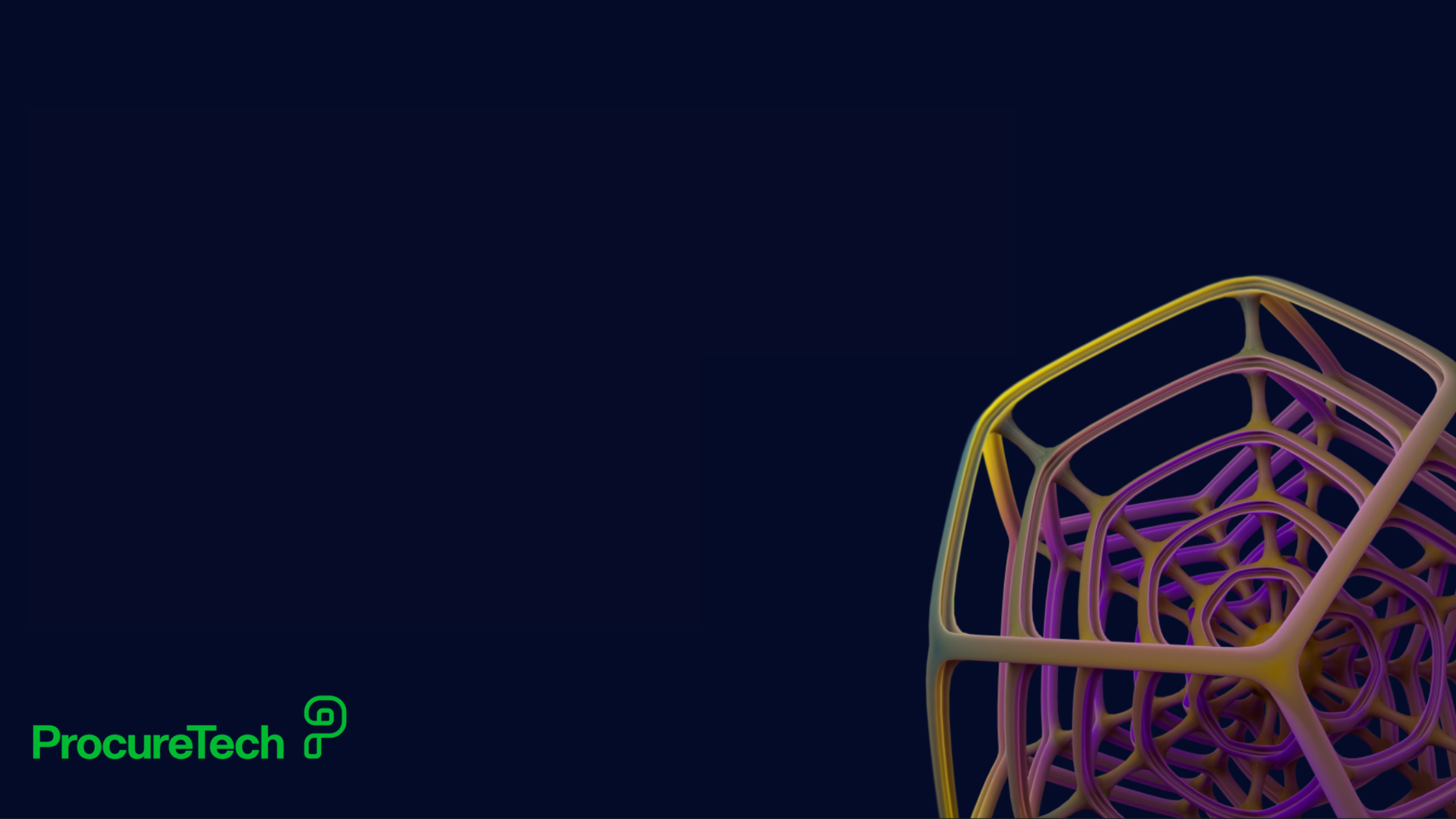Top Category Management Software Solutions for 2025
Category Management plays an important role in procurement and supply chain strategy, especially for organizations that manage a large number of suppliers or complex spend categories. As procurement teams grow more strategic in their approach, Category Managers are expected to drive cost savings, ensure supply continuity, and align purchasing decisions with business goals.
To do this effectively, many organizations rely on technology. In 2025, Category Management software is a key part of the digital procurement toolkit. It supports Category Managers by helping them organize data, analyze spend, and develop structured strategies for specific groups of goods or services.
This article explains what Category Management software is, how it supports procurement processes, and what to look for in a modern solution. It is intended for professionals researching these tools for the first time.
What is Category Management Software
Category Management software is a digital tool that helps procurement teams plan, manage, and execute strategies for specific categories of goods or services. Unlike general procurement software, which handles day-to-day purchasing tasks, Category Management software focuses on longer-term planning and strategy development.
These specialized tools give Category Managers a structured way to analyze spending patterns, track supplier performance, and create targeted strategies for different types of purchases. They typically include features for data analysis, collaboration, and performance tracking.
The main purpose of Category Management software is to help organizations make smarter decisions about how they spend money in different areas. By organizing purchases into categories (like office supplies, IT equipment, or raw materials), teams can develop more effective approaches for each group.
Key functions of category management tools include:
- Spend Analysis: Helps teams see where money is going and identify patterns
- Strategy Development: Provides frameworks for creating category-specific plans
- Supplier Management: Organizes information about suppliers in each category
- Performance Tracking: Measures the results of category strategies over time
Category Management software fits between strategic sourcing tools and day-to-day purchasing systems in the procurement technology landscape. It bridges the gap between high-level planning and execution.
How Category Management Software Transforms Procurement Strategy
Category Management software changes how procurement teams work by shifting focus from individual purchases to broader strategies. Instead of just processing orders, teams can plan ahead and make more strategic decisions about entire categories of spend.
This shift helps organizations move from reactive buying to proactive planning. With the right software, procurement teams can spot trends, identify savings opportunities, and manage supplier relationships more effectively across each category.
Before Category Management software, many teams relied on spreadsheets, email, and manual processes to track category information. This made it hard to maintain consistent approaches or share knowledge across the organization.
|
Traditional Procurement |
Category Management-Driven Procurement |
|
Focus on transactions |
Focus on strategies and relationships |
|
Spreadsheets and manual tracking |
Centralized data and digital workflows |
|
Reactive purchasing |
Proactive planning and analysis |
|
Limited visibility into spending |
Clear view of category performance |
With dedicated software, Category Managers can access all relevant information in one place, collaborate with stakeholders more easily, and track the impact of their strategies over time. This leads to better decisions, more consistent approaches, and greater value from procurement activities.
Essential Features of Modern Category Management Tools
When looking at Category Management software, several key features stand out as particularly valuable for procurement teams. These capabilities help transform raw data into actionable strategies.
%20(29).png?width=1917&height=1085&name=Blog%20Images%20etc%20(1917%20x%201085%20px)%20(29).png)
1. Comprehensive Spend Analytics and Visualization
Good Category Management software makes it easy to see where money is being spent. It organizes purchase data by supplier, department, category, and time period so teams can spot patterns and opportunities.
Visual dashboards with charts and graphs help make sense of complex spending data. Instead of digging through spreadsheets, Category Managers can quickly identify their biggest spend areas, unusual patterns, or potential savings opportunities.
These tools often include filtering options to focus on specific time periods, suppliers, or subcategories. This helps teams drill down into the details when needed while still maintaining the big picture view
2. Supplier Performance Monitoring and Relationship Management
Category Management software tracks how well suppliers are performing across different metrics like quality, delivery, and price. This information helps teams make informed decisions about which suppliers to work with for each category.
The software stores important supplier documents, contact information, and performance history in one place. This creates a "single source of truth" about each supplier that everyone in the organization can access.
Many tools also include features for managing supplier relationships, such as tracking communications, scheduling reviews, and documenting improvement plans. This helps maintain consistent approaches to supplier management across categories.
3. Collaborative Workflow and Cross-Functional Engagement
Effective Category Management involves input from many different departments. Good software makes it easy for teams to work together on category strategies regardless of their location or department.
These tools typically include shared workspaces where team members can contribute ideas, review documents, and track progress on category initiatives. Built-in notification systems keep everyone informed about updates or required actions.
Some platforms also provide templates and guided workflows that help standardize the Category Management process. This ensures consistent approaches while still allowing for customization based on each category's unique requirements.
4. Integration Capabilities with Procurement Systems
Category Management software works best when it connects with other procurement systems. Integration with spend analysis tools, contract management platforms, and purchasing systems creates a seamless flow of information.
These connections allow category strategies to be informed by real-time data and then translated into actual purchasing activities. When systems talk to each other, there's less manual data entry and fewer inconsistencies between planning and execution.
Integration capabilities vary widely between platforms. Some offer pre-built connectors to popular procurement systems, while others provide APIs that allow for custom integration development.
Top Category Management Software Solutions for Procurement Teams
The Category Management software market includes a range of options designed for different organizational needs. These solutions vary in complexity, price, and focus area.

1. Enterprise-Grade Platforms for Global Organizations
Large organizations with complex procurement operations often choose comprehensive platforms from established vendors. These solutions typically offer extensive functionality, robust integration capabilities, and global support.
Kodiak Hub delivers Category Management capabilities through its Supplier Relationship Management (SRM) suite. It helps teams organize suppliers by category, track performance metrics, and develop category-specific strategies. The platform is particularly strong in connecting Category Management with supplier risk monitoring and sustainability initiatives.
SAP Ariba Category Management provides structured workflows for developing and executing category strategies. It connects seamlessly with other SAP procurement modules and includes AI-powered insights to identify opportunities.
Coupa offers Category Management capabilities as part of its broader spend management platform. Following its acquisition of Cirtuo, Coupa now provides AI-powered category strategy development tools that help teams create and execute data-driven plans.
2. Mid-Market Category Management Solutions
Mid-sized organizations often look for solutions that offer strong functionality without the complexity of enterprise platforms. These tools provide core Category Management capabilities with more flexible implementation options.
Simfoni combines spend analytics and Category Management features in a user-friendly platform. It uses AI to categorize spending automatically and identify savings opportunities across different purchase categories.
3. Specialized Category Management Tools
Some Category Management solutions focus on specific industries or procurement challenges. These specialized tools offer tailored functionality for particular use cases.
Cirtuo (now part of Coupa) provides guided workflows for creating category strategies. It uses an interview-style approach to help procurement teams develop comprehensive plans even without extensive Category Management experience.
Beroe focuses on market intelligence for Category Management. It provides industry-specific data and insights to inform category strategies, particularly for indirect spend categories.
When selecting a Category Management solution, organizations should consider their specific needs, existing technology landscape, and procurement maturity level. The right tool depends on factors like organization size, category complexity, and strategic objectives.
Implementing a Successful Category Management System
Implementing Category Management software requires careful planning and change management. Organizations that take a structured approach tend to see better results and higher adoption rates.
The first step is assessing your current Category Management practices. Look at how categories are currently defined, how strategies are developed, and what tools are already in use. This baseline helps identify gaps that new software could address.
Next, define clear objectives for the implementation. Common goals include increasing spend under management, improving supplier performance, or reducing category costs. Specific, measurable targets help guide the selection process and evaluate success.
When selecting software, involve stakeholders from procurement and other departments who will use the system. Their input helps ensure the chosen solution meets actual business needs rather than just technical requirements.
Implementation typically involves several phases:
- Data preparation and migration
- System configuration and customization
- Integration with existing systems
- User training and change management
- Pilot testing with selected categories
- Full rollout and ongoing support
Successful implementations focus as much on people and processes as on technology. Clear communication, comprehensive training, and visible leadership support help ensure the new system is actually used once implemented.
The Future of Category Management Technology
Category Management software continues to evolve with new technologies and changing business priorities. Several trends are shaping the future of these tools.
Artificial intelligence and machine learning are becoming core components rather than add-on features. These technologies help analyze large datasets, identify patterns, and generate recommendations for category strategies. Some platforms can now suggest optimal sourcing approaches based on historical data and market conditions.
Sustainability tracking is increasingly integrated into Category Management. Modern tools help organizations monitor environmental and social impacts across different purchase categories. This supports responsible sourcing decisions and helps meet growing regulatory requirements around supply chain sustainability.
Mobile accessibility is improving, allowing Category Managers to access information and make decisions from anywhere. Cloud-based platforms with responsive designs make it possible to review category performance or approve strategies on phones and tablets.
Integration between systems is becoming more seamless. API-first development approaches and standardized data formats make it easier to connect Category Management software with other procurement tools, ERP systems, and external data sources.
As these technologies mature, Category Management software will continue to evolve from documentation tools to active decision support systems that help procurement teams maximize value across all spending categories.
Selecting the Right Category Management Platform for Your Organization
Choosing the right Category Management software depends on understanding your organization's specific needs and priorities. Several factors can guide this decision.
Consider your organization's size and procurement structure. Large enterprises with global operations may need more robust governance features and multi-language support. Smaller organizations might prioritize ease of use and quick implementation.
Think about your category portfolio complexity. Organizations with diverse spending across many categories may need more sophisticated classification and analysis tools. Those focused on a smaller number of strategic categories might prioritize depth of functionality in specific areas.
Evaluate integration requirements carefully. The best Category Management solution connects smoothly with your existing procurement systems, ERP platform, and data sources. Ask vendors about standard connectors, API capabilities, and implementation support.
User experience matters for adoption. Look for intuitive interfaces, configurable dashboards, and workflows that match your team's processes. If possible, arrange demonstrations or trial periods so actual users can test the software.
Finally, consider implementation and support resources. Some vendors offer comprehensive onboarding programs, training materials, and ongoing support. Others may provide more basic implementation assistance, requiring you to handle more of the setup internally.
By carefully evaluating these factors against your specific needs, you can select a Category Management platform that truly supports your procurement strategy and delivers lasting value.
Ready to explore how Category Management software can transform your procurement approach?
Book a Demo to see Kodiak Hub's Supplier Relationship Management (SRM) platform in action.
FAQs About Category Management Software
What is the difference between Category Management and Procurement software?
Category Management software focuses on strategic planning for groups of similar purchases, while procurement software handles transactional activities like purchase orders and invoice processing. Many organizations use both types of systems together as part of their complete procurement technology stack.
How much does Category Management software typically cost?
Pricing varies widely based on organization size and features needed, ranging from $10,000 annually for basic solutions to over $100,000 for enterprise implementations. Most vendors offer subscription-based pricing models with different tiers based on user counts and functionality.
How does Category Management software support sustainability initiatives?
Category Management platforms help track supplier sustainability metrics, identify environmentally preferable alternatives, and measure progress toward sustainability goals across different purchase categories. This functionality helps organizations make more responsible sourcing decisions.
Can Category Management software integrate with our existing Procurement technology?
Most modern Category Management solutions offer integration capabilities through APIs or pre-built connectors to common procurement systems. During evaluation, ask vendors specifically about compatibility with your current technology landscape.
What ROI can companies expect from implementing Category Management software?
Organizations typically see improvements in spend visibility, supplier performance, and cost management after implementing Category Management software. The specific financial return varies based on starting maturity level and implementation effectiveness.













